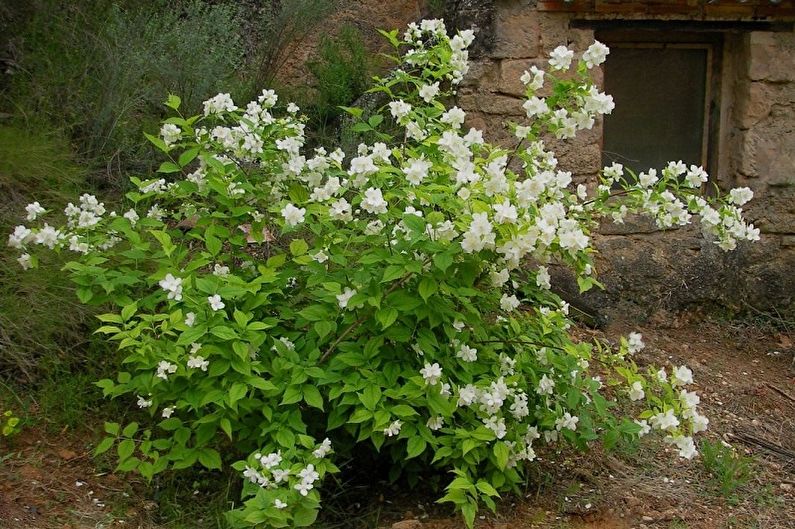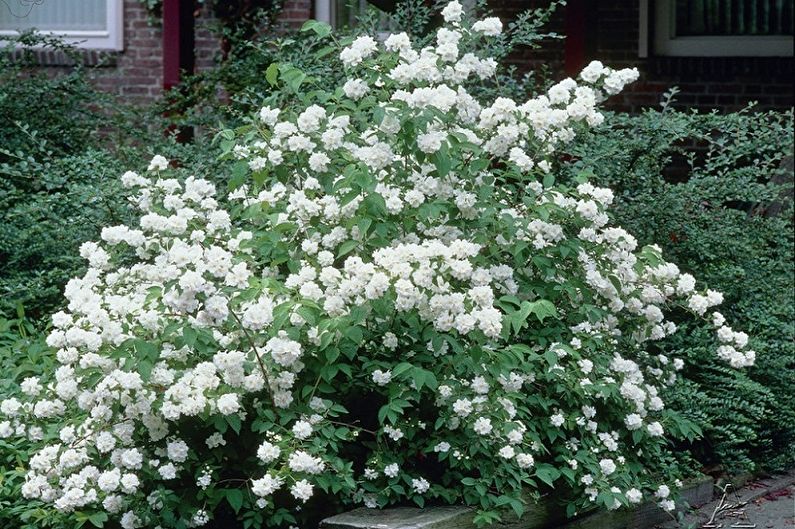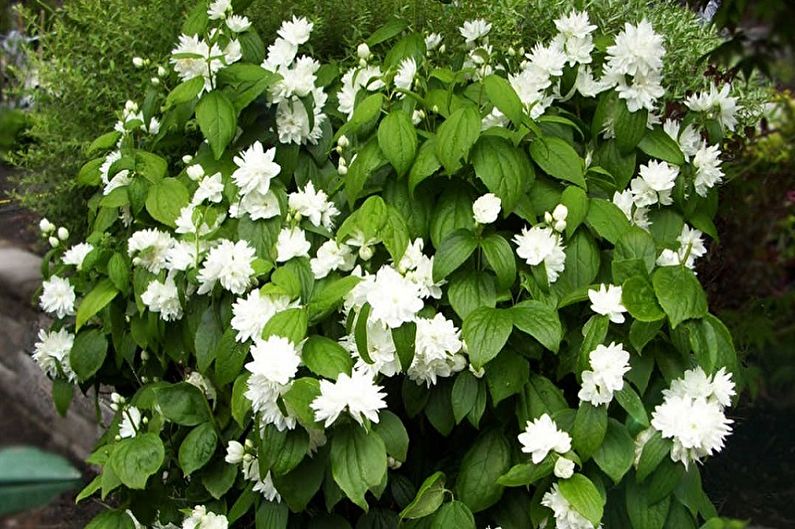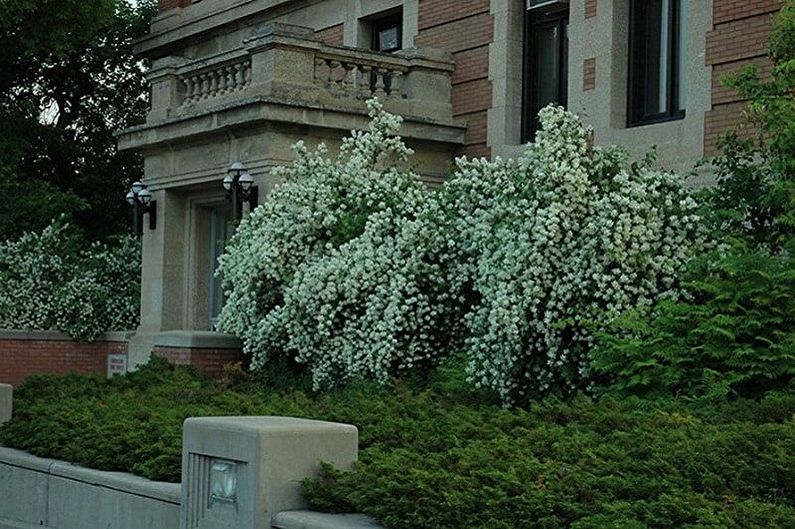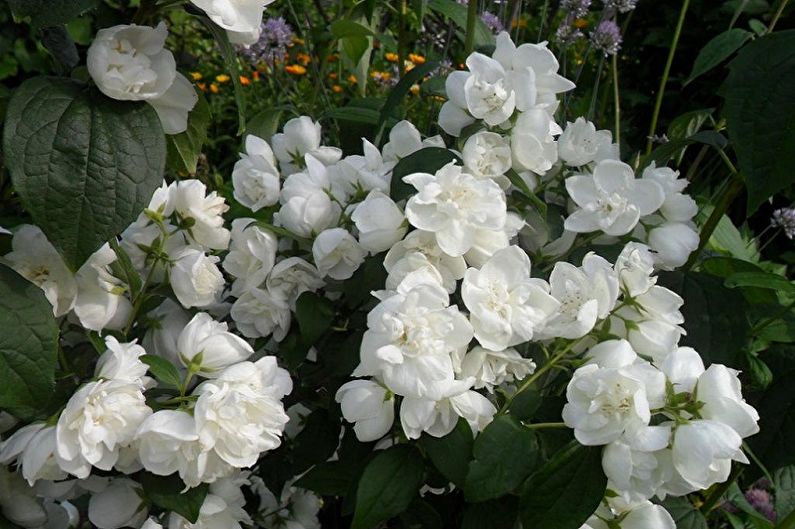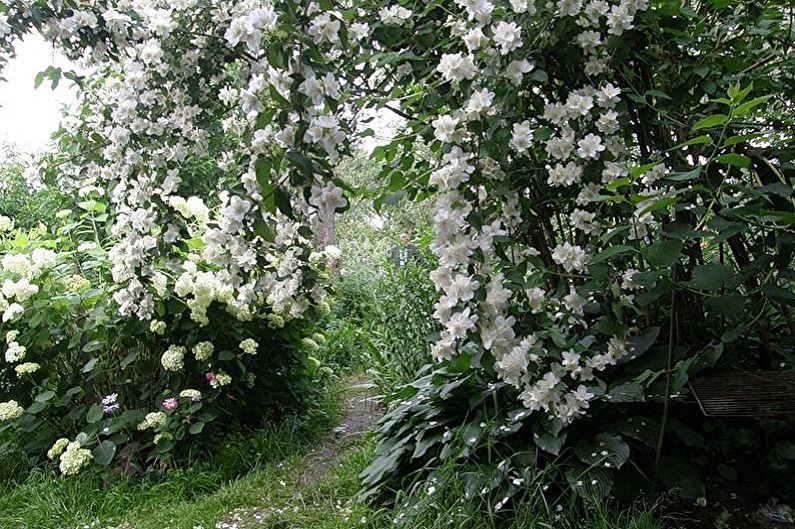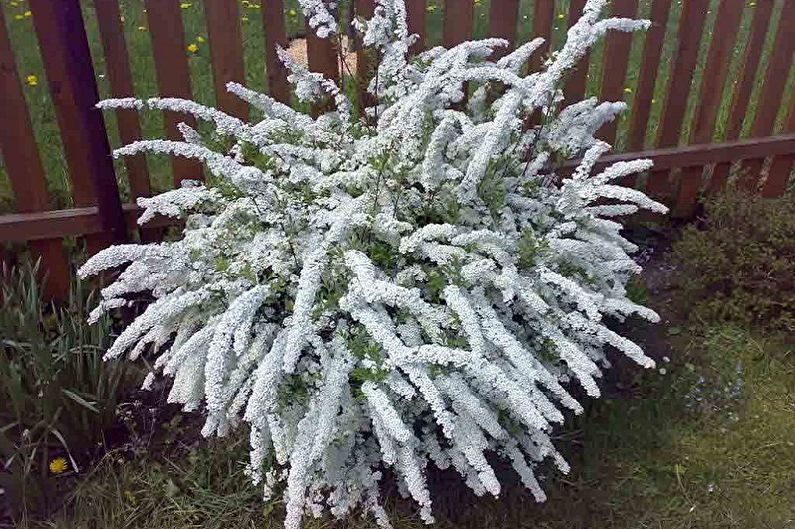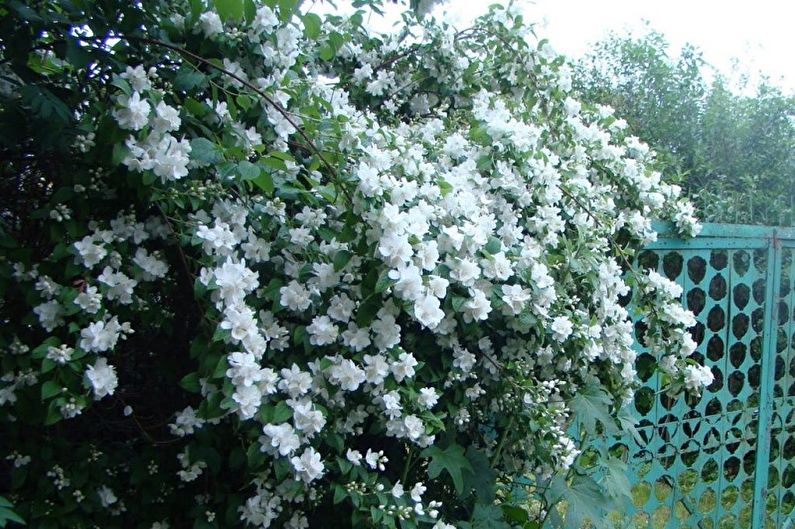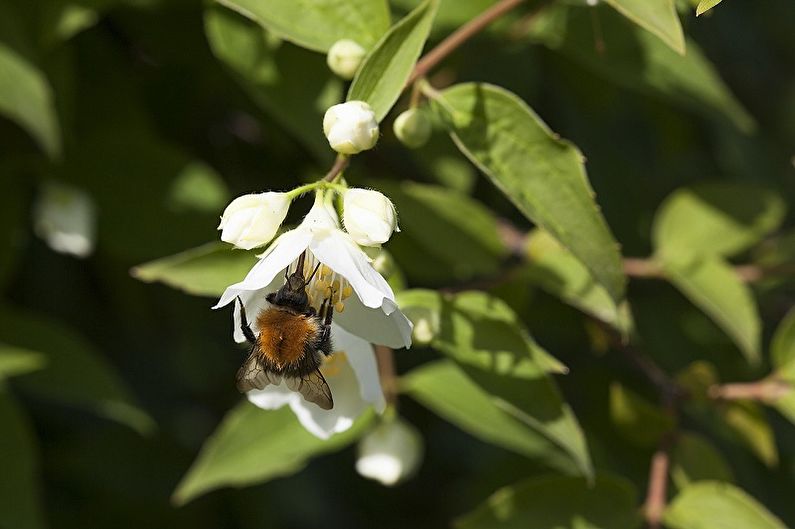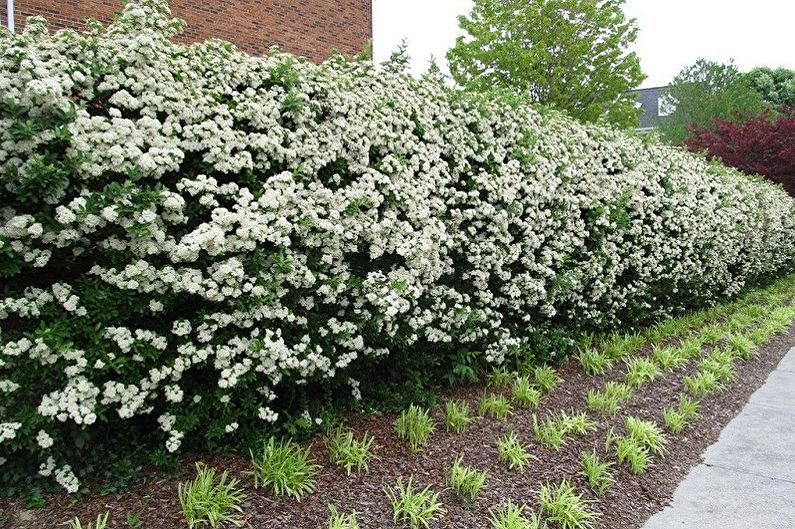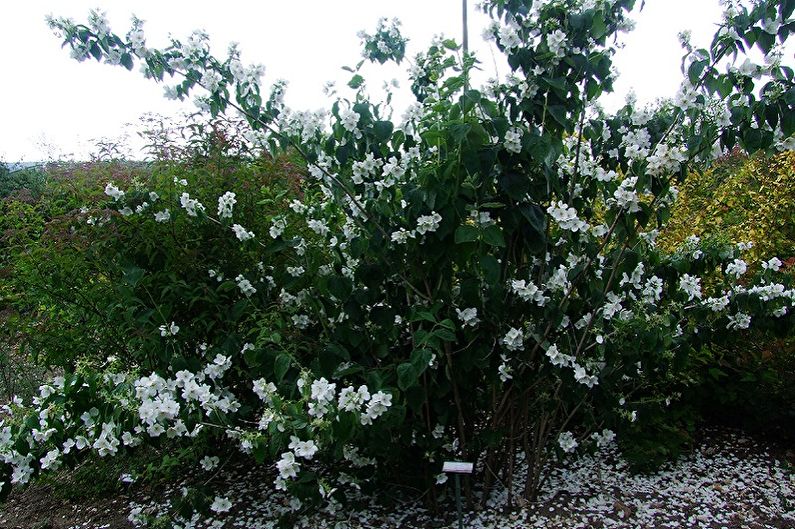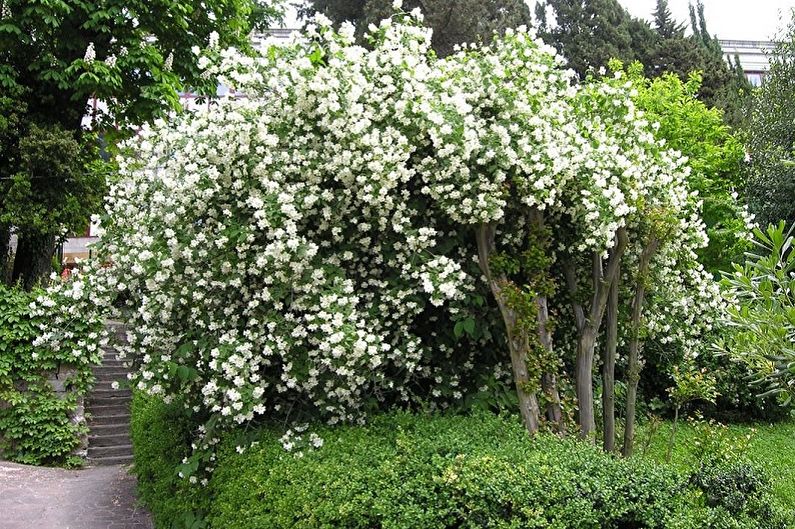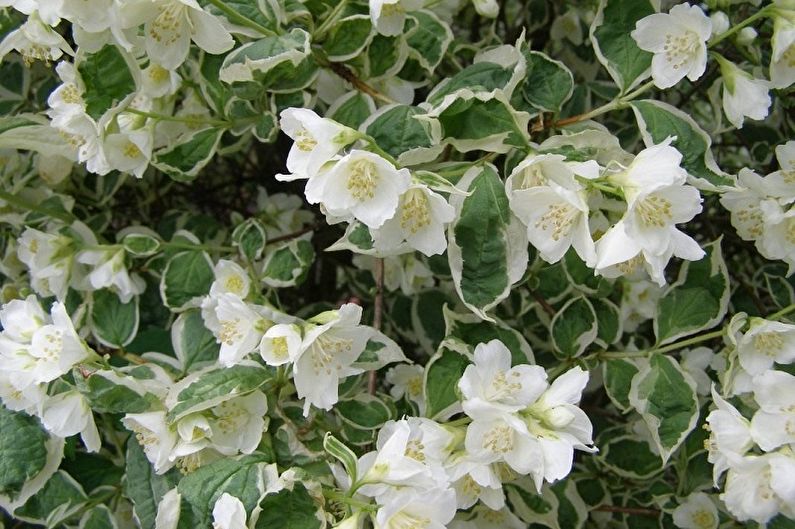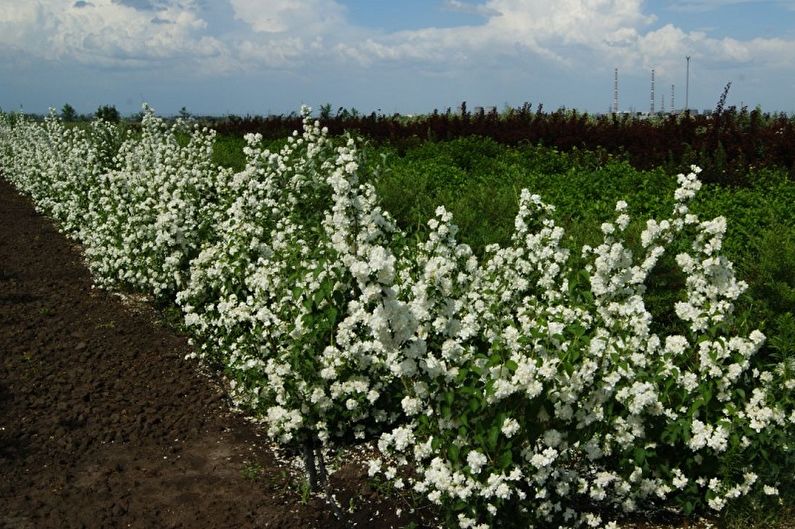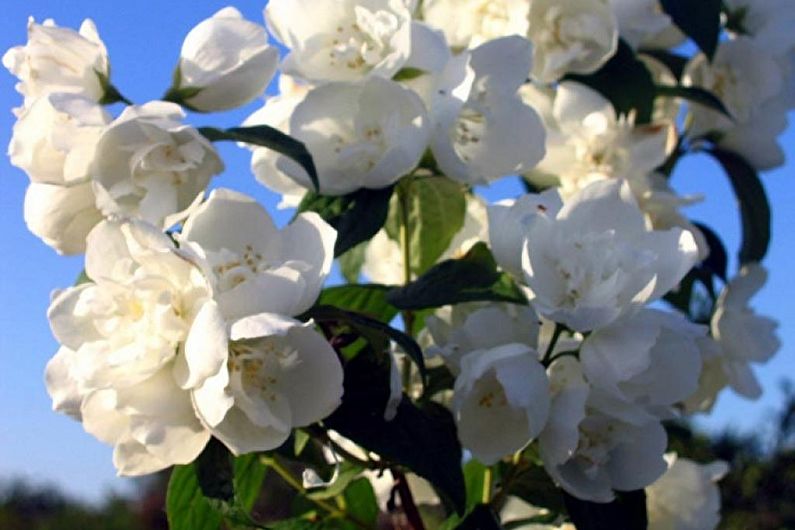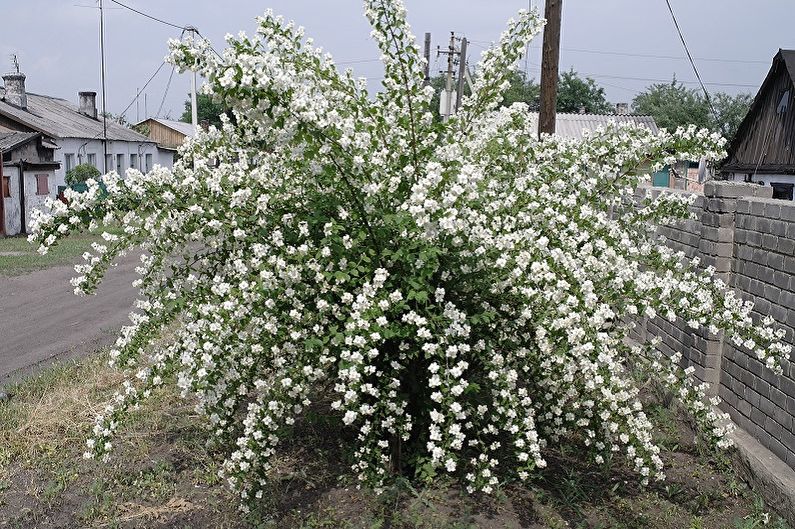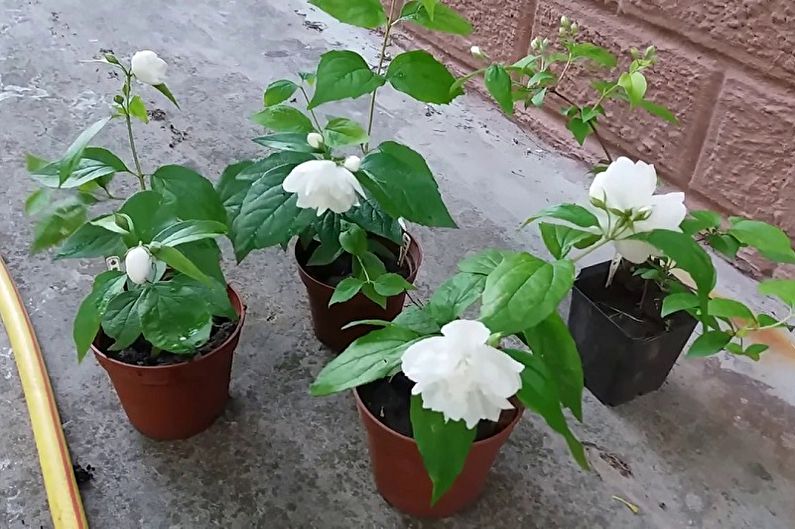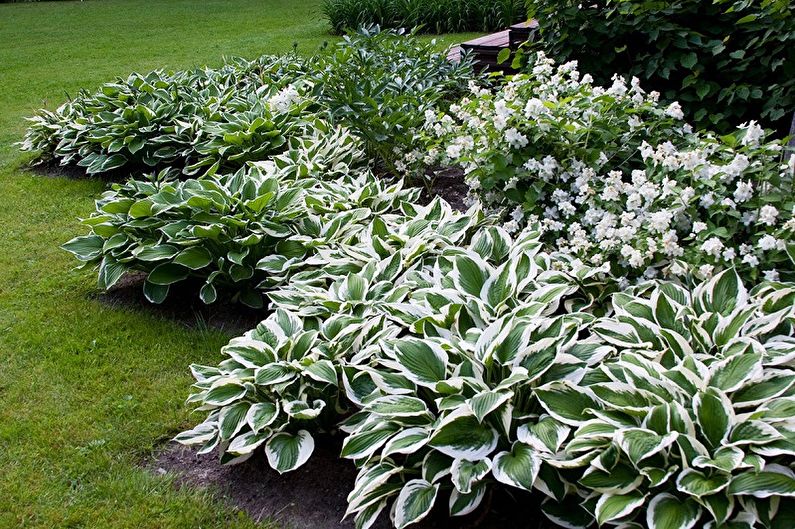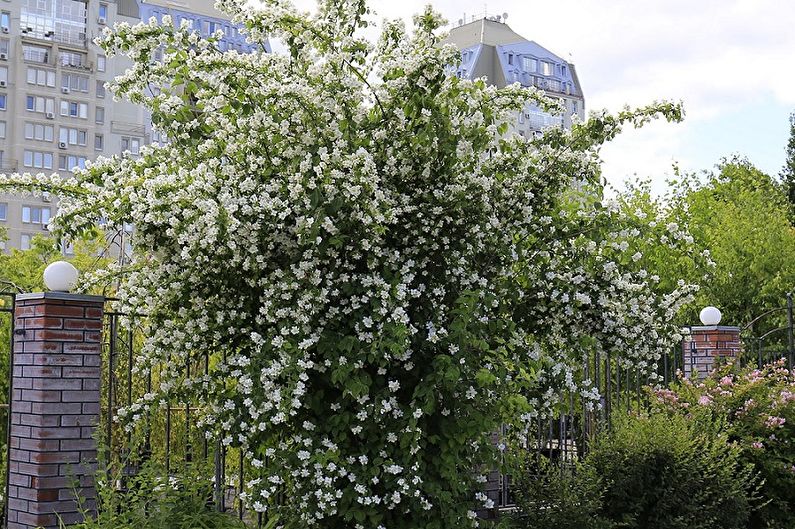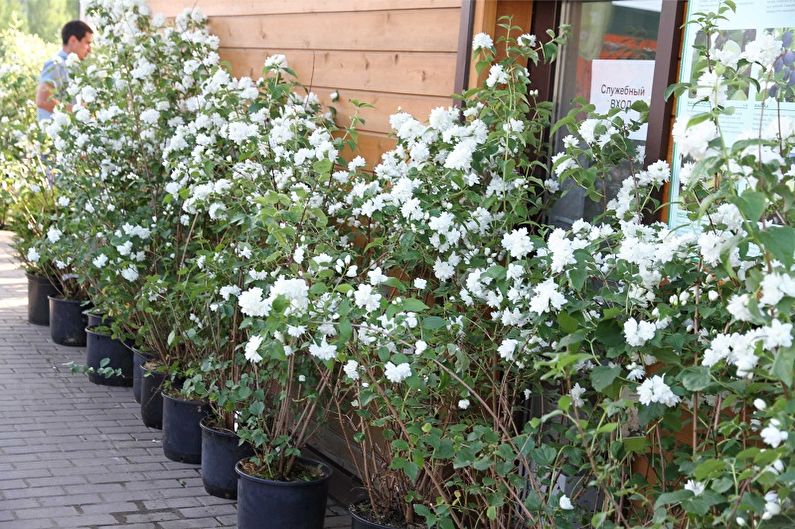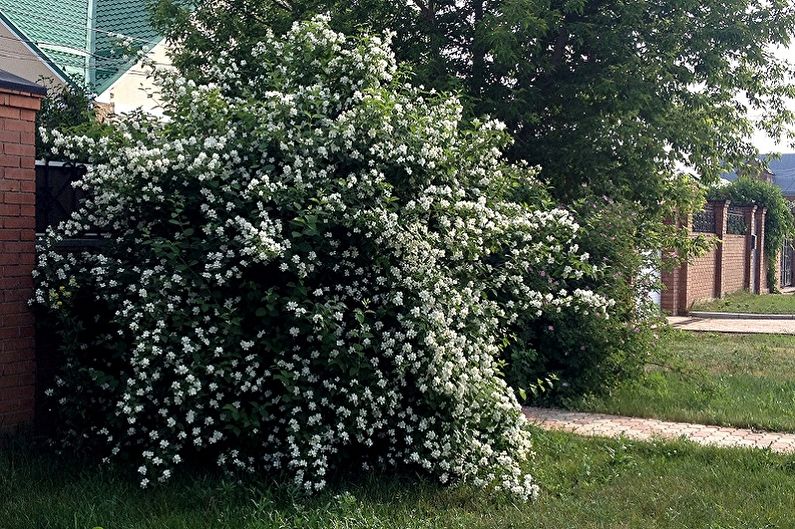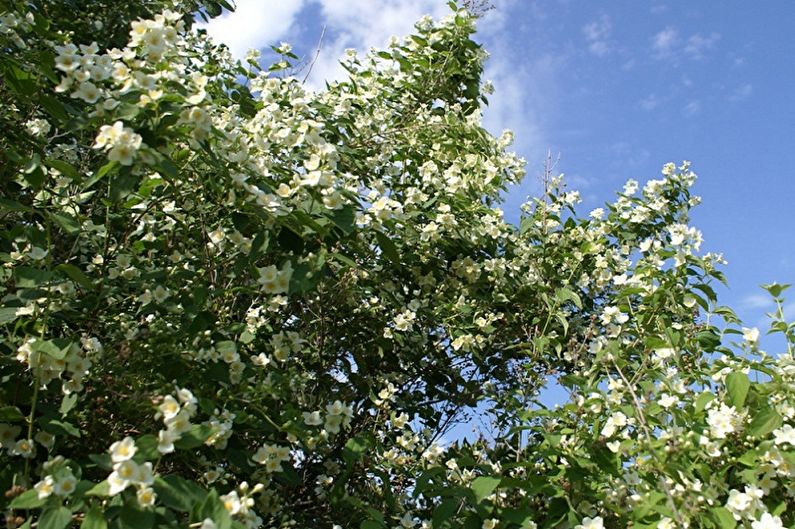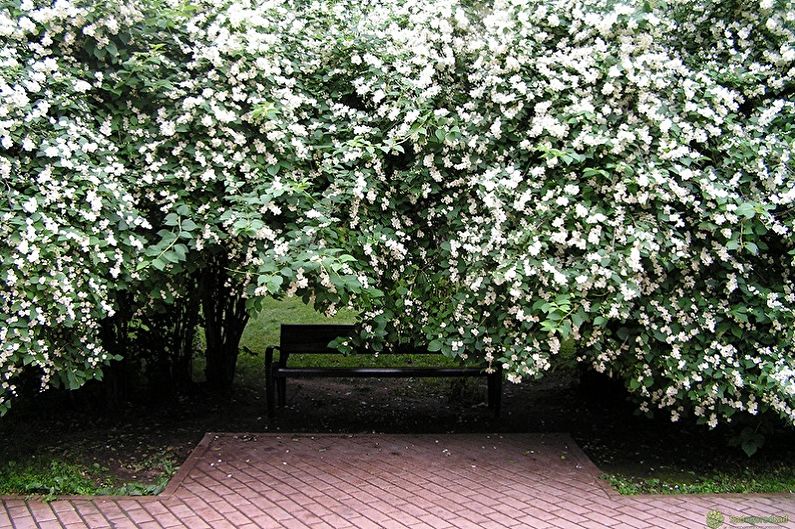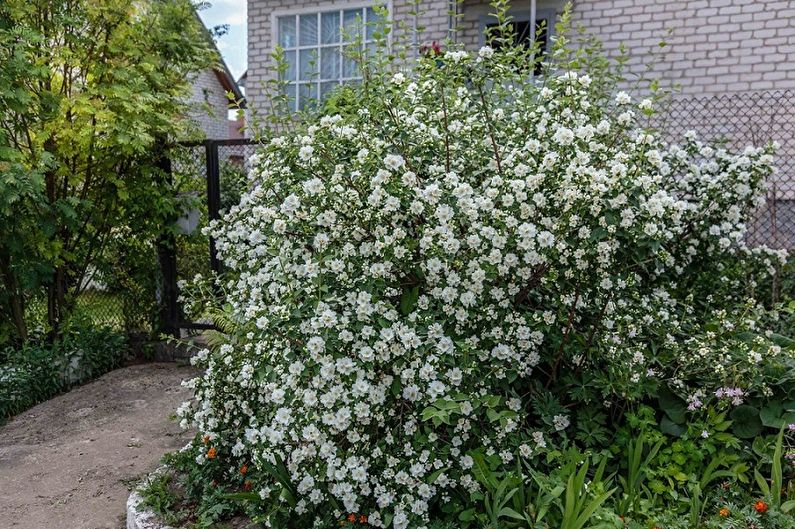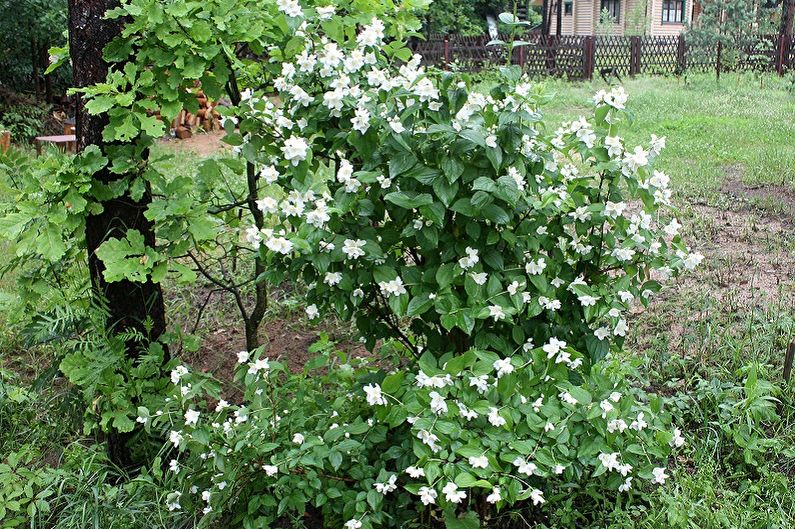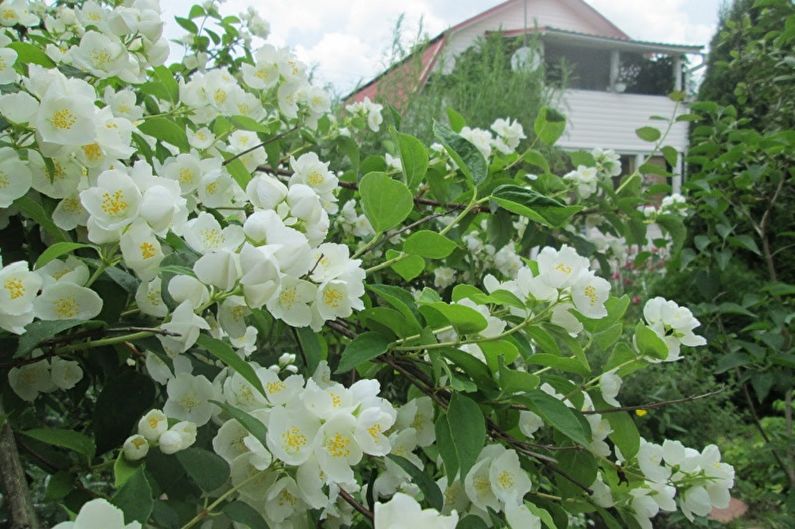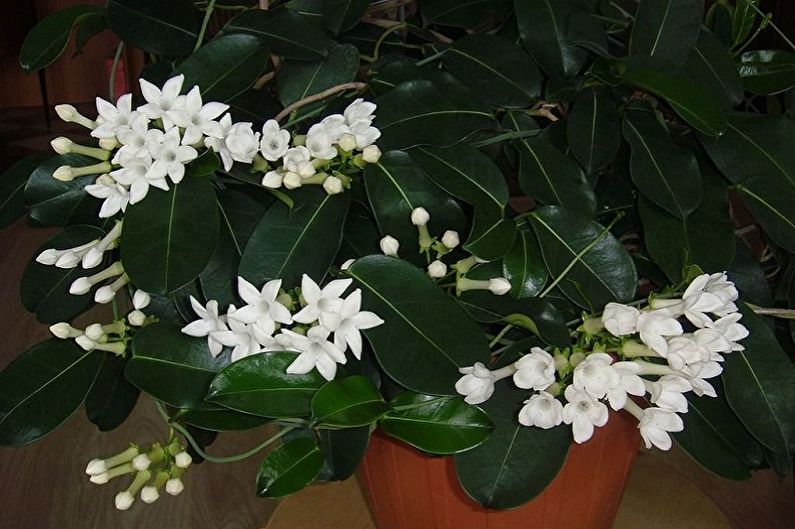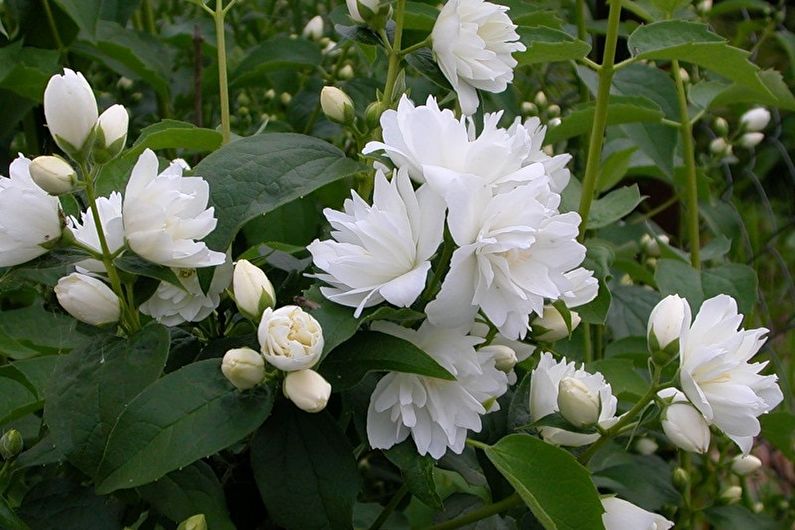
Many even once in their lives saw a mocker, but not everyone knows that it was he. Fragrant shrubs with white flowers are found in parks and resemble jasmine. For this he was nicknamed the garden jasmine. It got its name because of the so-called chubuk - pipes for smoking, which were made from its branches. Unpretentious plant like gardeners and landscape designers. It is easy to grow and easy to care for, and outwardly it looks like a magnificent green fountain. The motherland of mock-mock is Europe, the north of America and the eastern regions of Asia.
general characteristics
Chubushnik is a perennial that belongs to the Hortensian family. These are small shrubs with small leaves and thin flexible shoots. They bloom throughout the summer. The brown-gray bark is notable for the fact that it exfoliates a little. Shoots reach 3 m, but more often grow to a meter. They thicken and stiffen only to the base.
Leaves are egg-shaped, elongated or oval, up to 7 cm. They are smooth and dark green, with pronounced longitudinal veins. Simple or double flowers with pointed petals are collected in a brush up to 9 buds. The maximum diameter is 6 cm. Fruits are sectional boxes about a centimeter in them are tiny dusty seeds.
Chubushnik needs the sun, but tolerates the shadow well. It requires moisture and constant moisture, but will fade if the water stagnates. Short-term drought has almost no effect on the condition of the flower. Fragrant flowers attract numerous insects to the garden.
Dense thickets - an excellent hedge. They are used in the design of fences, borders, facades and household objects. When flowering, bushes turn into fragrant cascades. Tall varieties are an ideal background for flower beds and seedlings, and low and miniature harmoniously fit into an alpine hill or rockery.

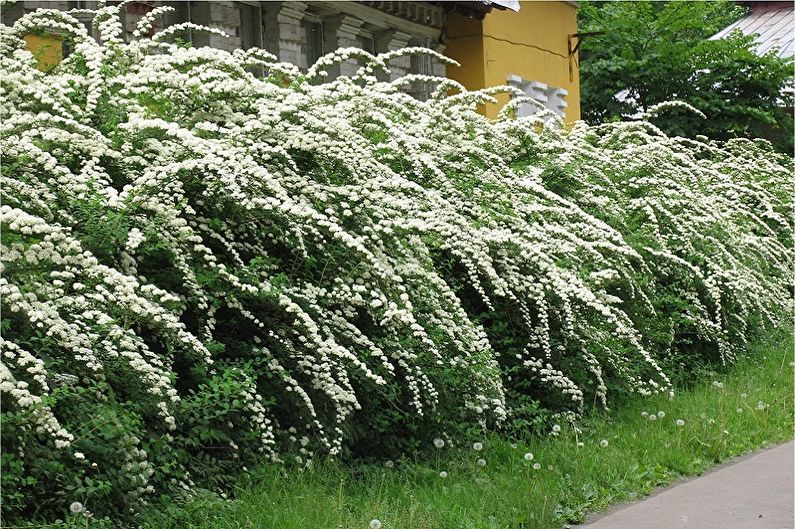
Types of mock up
There are approximately 60 species of mock orange. They differ in aroma and a little appearance. The smell of some varieties resembles citrus or strawberries.
Chubushnik ordinary
Classic upright branched mock-up with elegant three-meter shoots. Leaves are simple oval, medium sized. Loose brushes with delicate cream flowers appear on the shoots. Like the whole variety, they are small and elegant.
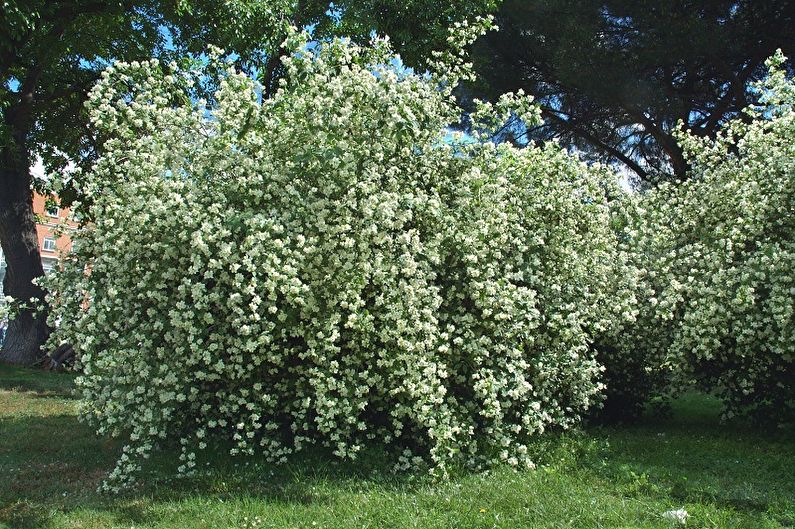
Chubushnik coronet
This is a frost-resistant spreading three-meter shrub. His homeland is the southern regions and Asia Minor. Shoots are flexible, long and branched. Bark - with an unusual reddish or yellowish tinge. Oval thick leaves are opposite. Outside they are smooth, and on the reverse side they are slightly pubescent. Flowers - about 5 cm in diameter, a delicate cream shade, in large and loose brushes.
The flowering period begins by the end of spring and lasts up to 3 weeks. The coronet chubushnik tolerates winters up to -25С. Interesting subspecies include the golden Aureus, the wide and dark Variegata with fringed leaves, and the sprawling Innosens with rare flowering and decorative marble patterns on leaf plates. Such a mocker lives up to 30 years.
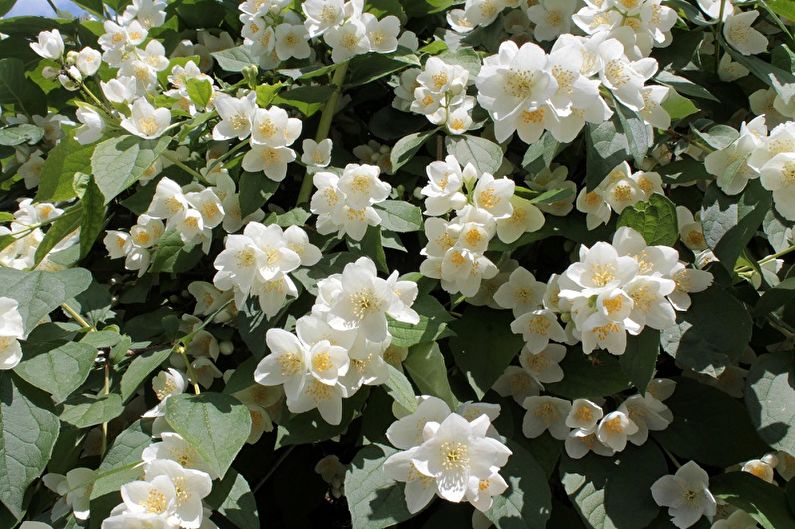
Hybrid mock
The extensive selection category includes dozens of decorative varieties and their interspecific combinations. For example, a compact colorful Moonlight, sprawling Majori, graceful Elbrus, slender Snowflake, tall weeping Schneeishturm and others.

Small-leaved mock-up
This is a dwarf undersized shrub, when flowering, resembling a miniature cherry. In season, fragrant flowers with the smell of strawberries completely cover the entire bush.
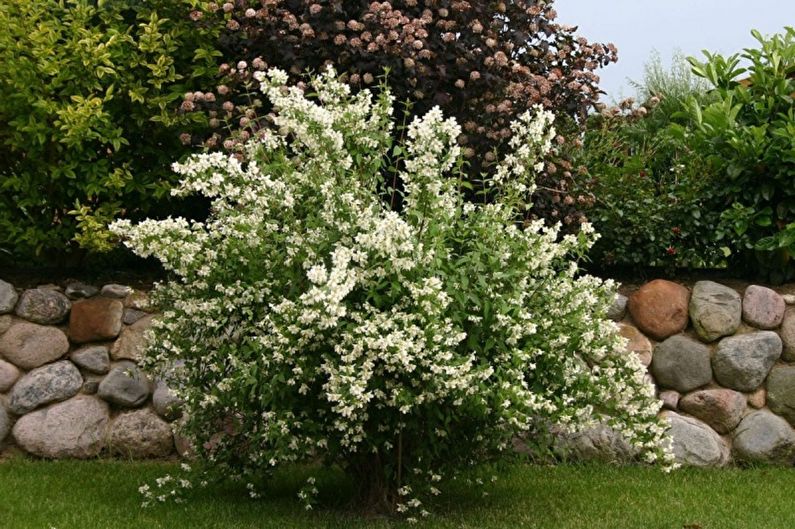
Fluffy mock
This variety got its name because of the light airy bottom sheets. Large and neat cup-shaped flowers hardly smell.But large inflorescences for 5-10 buds are very decorative. A tall bush grows to 3 m. Flowering begins in the midst of summer.

Odorless chubushnik
The bush with large green four-meter shoots and large leaves is odorless even during flowering, as indicated by the name of the variety. But it is beautiful and decorative, with large white flowers of 5 buds per brush. The length of leaves on the shoots on which buds do not grow, sometimes reaches 12 cm. This variety is notable for its width. The flowering period begins by the end of June and lasts almost until August.
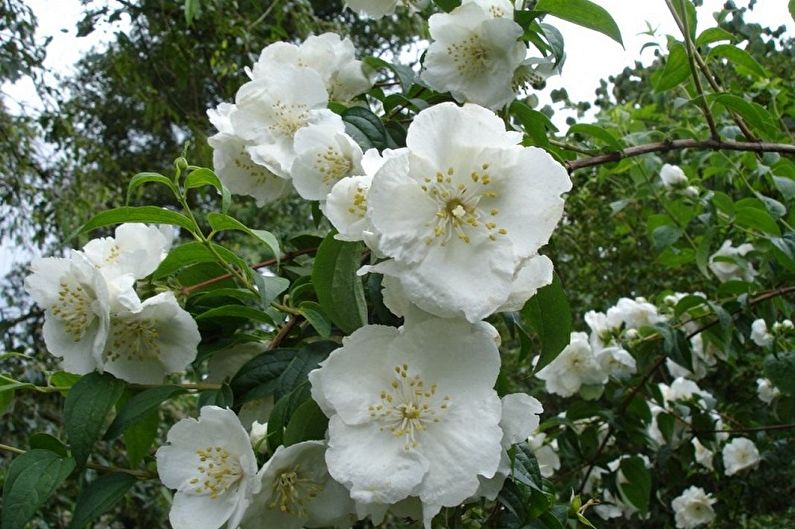
Chubushnik Shrenka
His homeland is the Far East, China and Korea. The main feature is early flowering. It blooms one of the first in the middle latitudes. Narrow oval leaves resemble an egg. Delicate fragrant flowers reach 4 cm. In the inflorescence an average of 9 buds. The flowering period lasts from June and lasts 3-4 weeks.
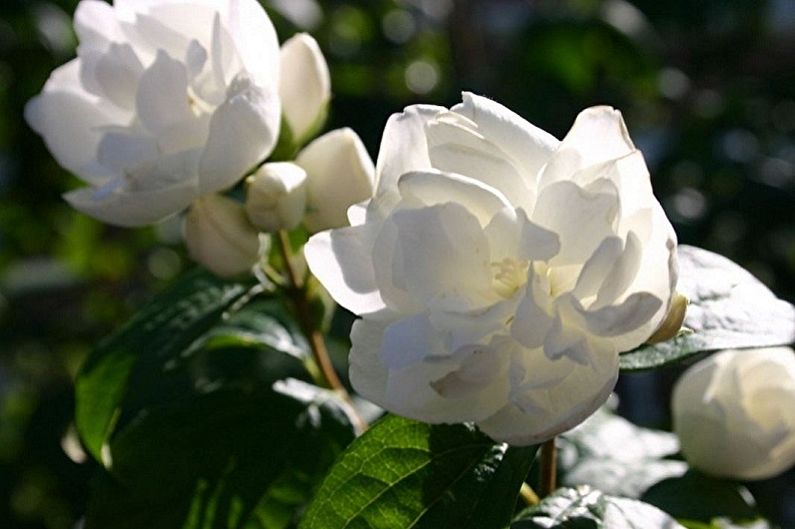
Lemuan mock
This is a hybrid that includes several dozen subspecies. They are united by a rich sweet smell. Bushes grow in dense three-meter thickets. Small and bright leaves are diluted with fragrant flowers. Of the most famous species - frost-resistant terry mock-up, dense and compact Mont Blanc, fluffy bell Snowbelly, flexible and sprawling Virgin, fluffy decorative Bicolor and luxurious Ermine mantle.
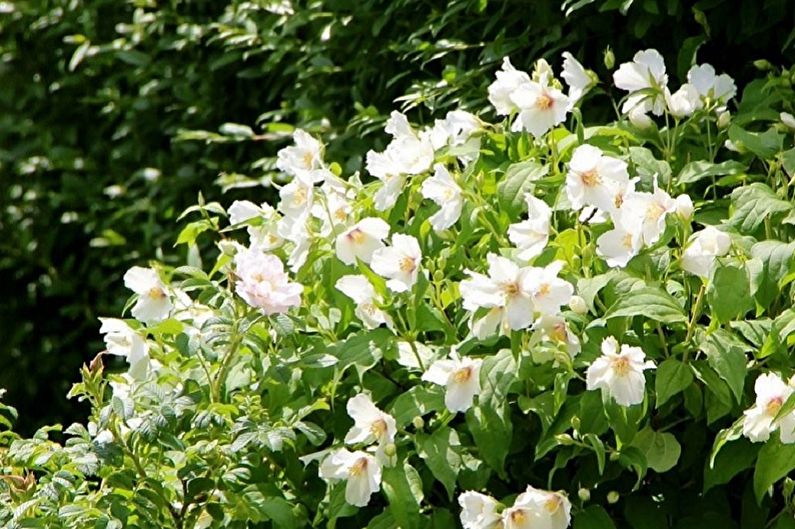
Mocker gordon
This is one of the highest varieties, which under favorable conditions grows up to 5-6 m. It has large glossy leaves and large snow-white flowers, which make it also one of the most decorative varieties. The aroma is almost indistinguishable. The flowering period begins by the end of June.
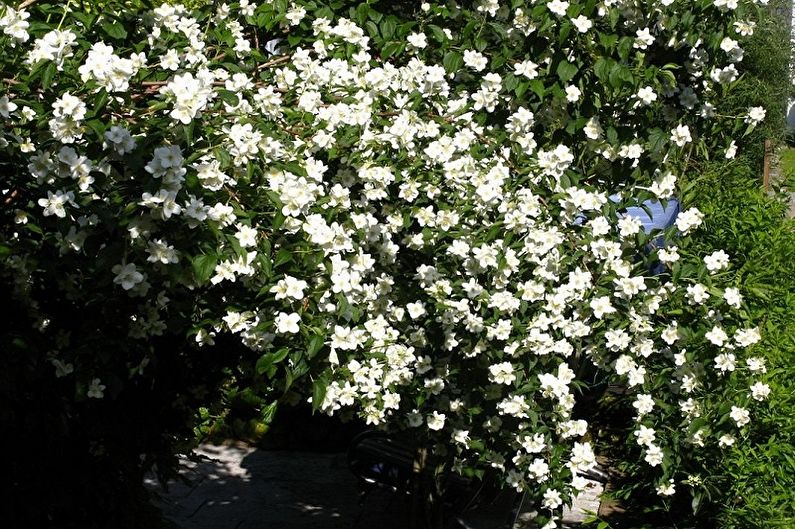
Breeding varieties
The number of decorative species of Chubushnik, artificially bred, is almost unlimited. This is a high Airborne landing, snow-white Arctic, miniature Unusual, original Ballet of moths, elegant Pearls and others.
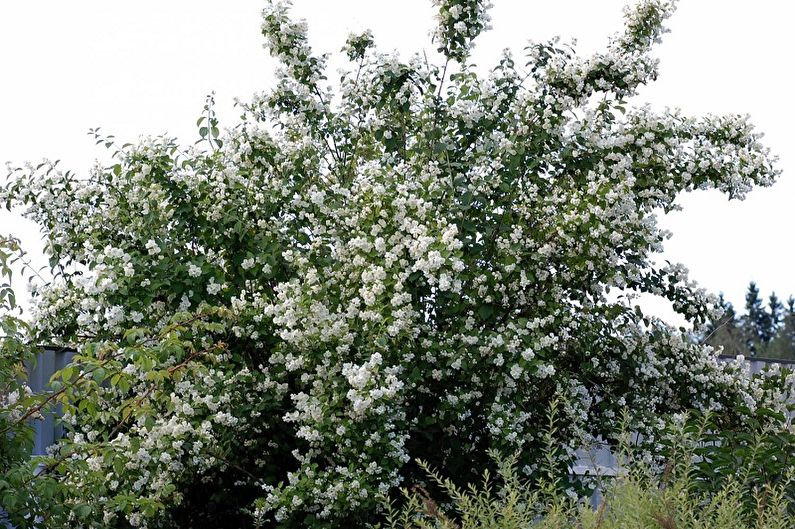
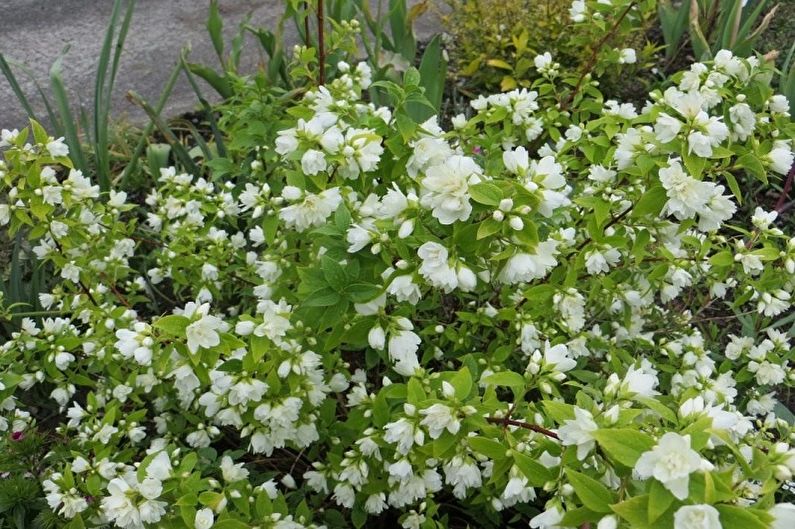
Chubushnik Care
By nature, Chubushnik is a very unpretentious ornamental shrub. But it is important to choose the right place. In order for it to intensively turn green and bloom, you need as much sun as possible, and to grow and stretch - a shadow.
The ideal ground is leafy mixed with humus and sand. It must be loose, lightweight and nutritious, certainly with a neutral level of acidity. Periodically, the soil needs to be loosened and weeds weeded. Fertilizers are applied systematically. In the spring - organic matter, and directly to flowering - mineral mixtures with potassium and phosphorus.
To avoid stagnation of water, drainage is needed. The easiest option is a fifteen-centimeter pebble layer. This is more than enough for a comfortable life of the plant. As for watering, the mock-ups have enough natural rainfall. Additionally, you need to water it in the drought season.
Chubushnik cut off in several passes. In the spring, all damaged, dried out and frozen shoots are removed. At the same time, the crown can be shaped. Old thickets must be rejuvenated, completely cutting off the stems to stimulate growth. This will increase the number of kidneys and significantly improve the appearance of the crown. In the fall, sanitary cleaning is carried out, shoots growing inside and excess land shoots are removed.
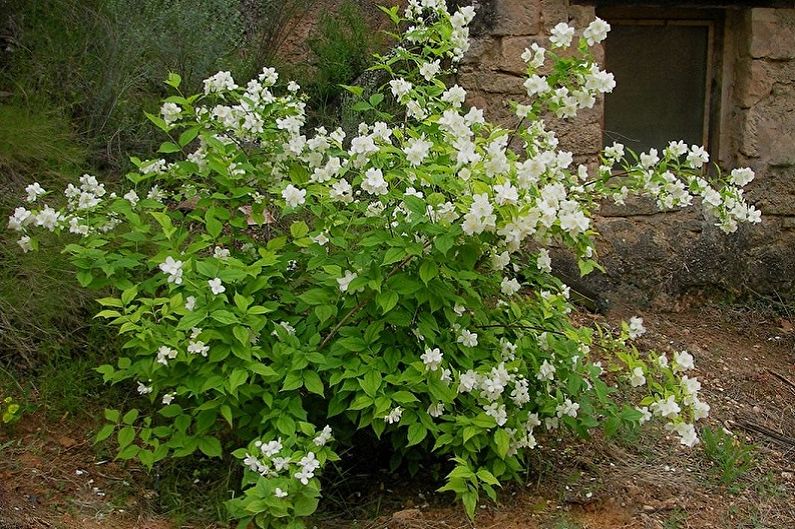
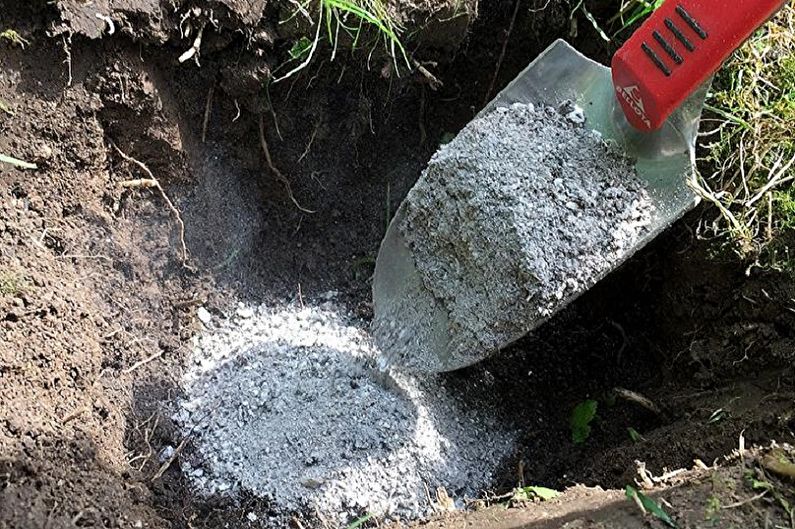

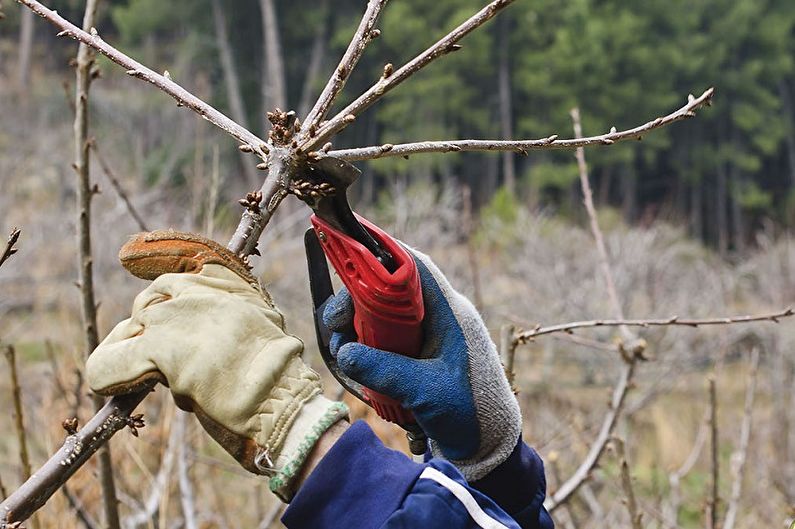
Transplantation and reproduction
It is best suited for moths planted in autumn. In spring, this can only be done before the leaves bloom. Otherwise, the bush may die. During planting, lower only the root, but not the stem, into the ground so that it does not start the thread. The average planting depth is about 0.5 m. The interval between shrubs is up to 1.5 m. When a bushy hedge is formed, it can be reduced. The decorative bush propagates in any classical way.
Chubushnik propagation by seeds
For seed cultivation, take only fresh material that is not yet one year old. Mix the seeds with sand a couple of months before planting and leave in the refrigerator. By early spring, they can be dropped into containers. The first shoots appear within 10 days.After another 2 weeks, seedlings can be dived, and by the beginning of summer - transplanted into the open ground. But keep in mind that such a bush will not bloom soon. Sometimes - only after 5-8 years.
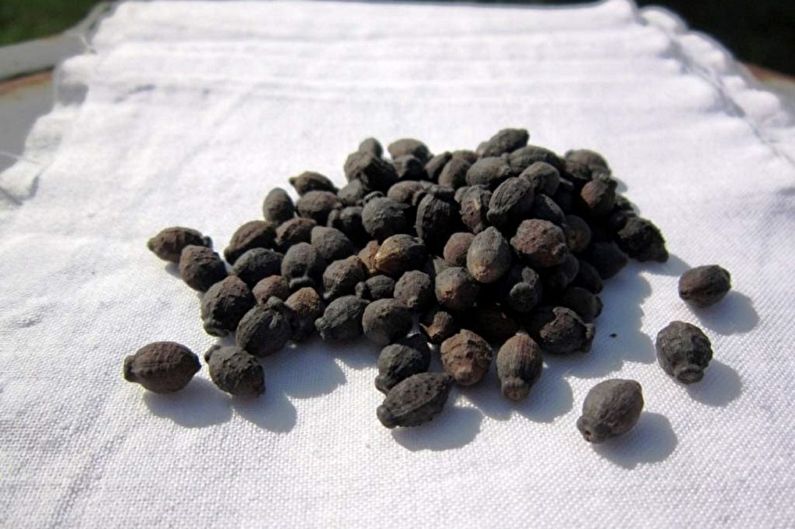
Chubushnik reproduction by layering
A convenient natural way is basal shoots or air layers. At the beginning of spring, large, adult and healthy bushes are dug up and divided. But this method is not very suitable for miniature varieties.
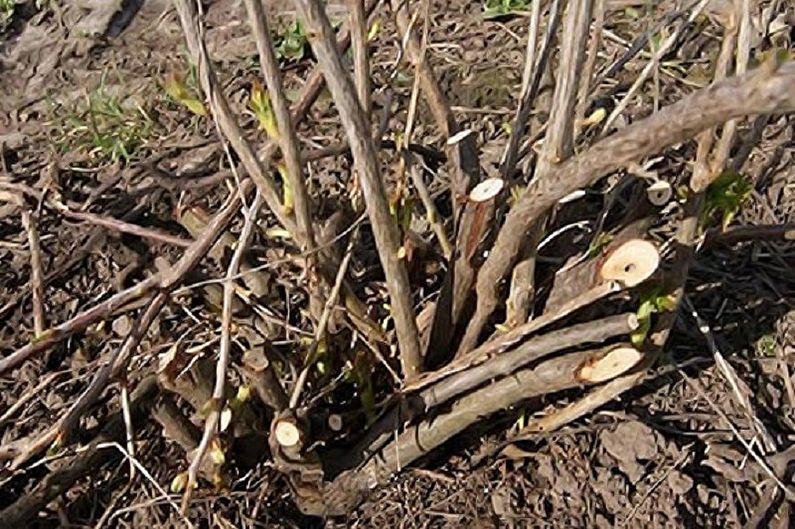
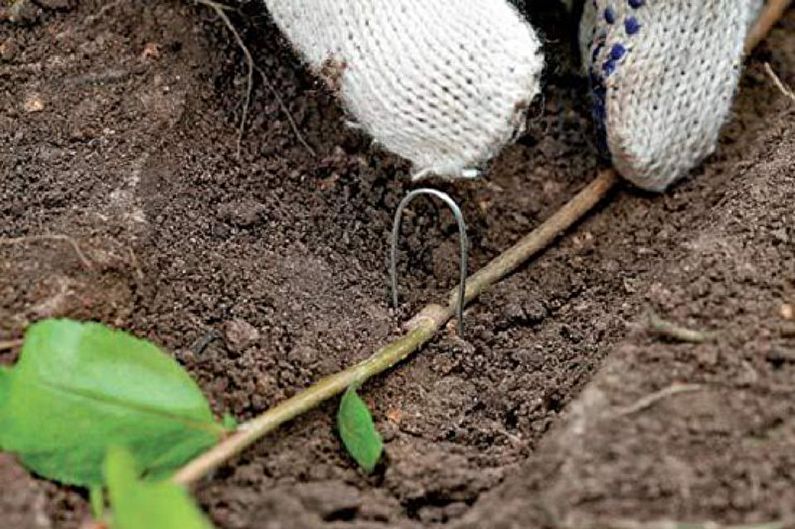
Chubushnik reproduction by cuttings
Cutting is an effective and almost win-win option. It does not even need special experience and skills. During the summer, cut the shoots to 10 cm and treat the cut with charcoal or a special compound for rooting. After that, plant the cuttings in a box with garden soil and cover with a film, systematically spraying. The roots appear within two weeks.
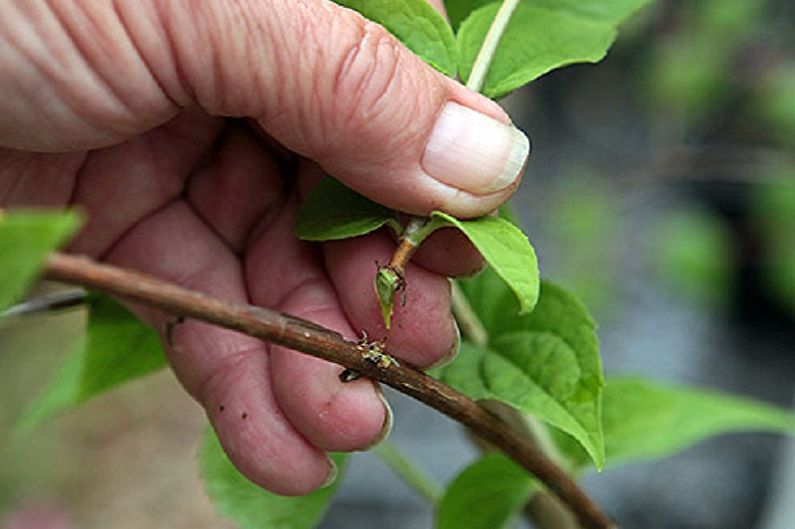
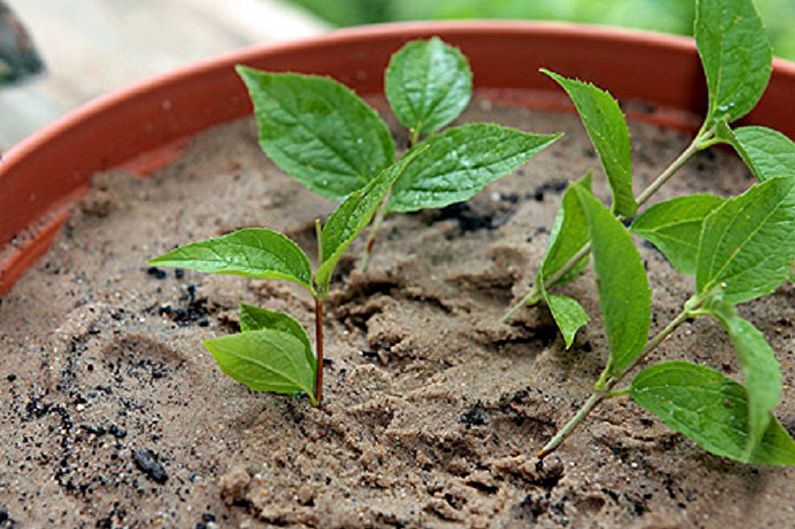
Pest and Disease Control
The most common diseases of mockworm are gray rot, septorious spotting and other fungal infections. The control mechanism is standard: to collect and destroy all damaged leaves and prophylactically treat bushes with Bordeaux liquid and its analogues.
The main pests and parasites are bean aphid, hawthorn, nutcracker beetles. To avoid an invasion, weeds and damaged areas must be removed in a timely manner, and seedlings must be regularly treated with specialized insecticides.
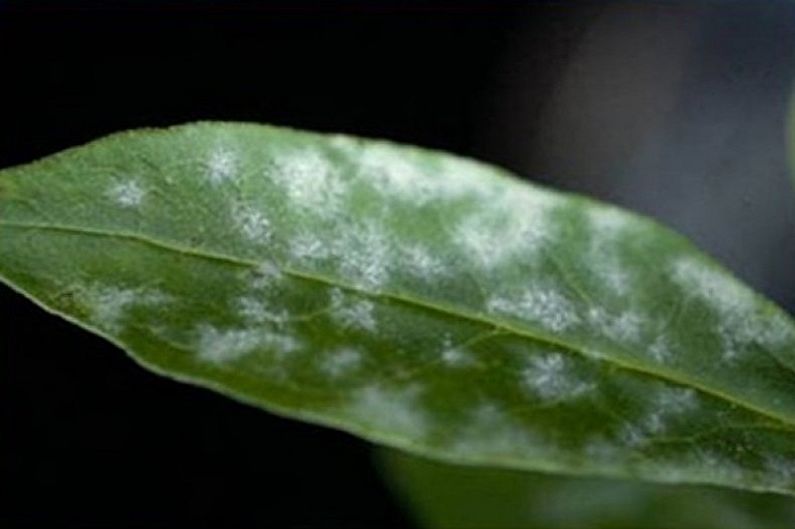
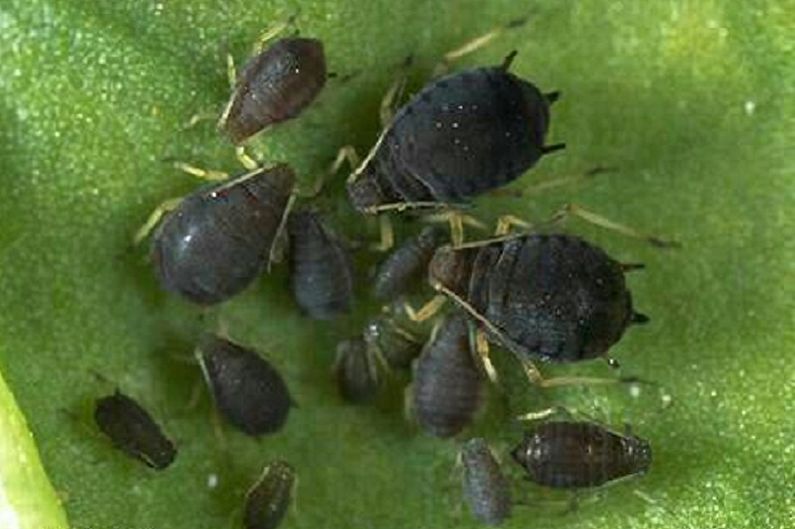
Chubushnik - photo
If you are just looking for where to get inspiration and fresh ideas for decorating home seedlings, we offer you our selection of photos! We have collected bright and original pictures with a mock-up guy so you can find a solution to your liking!
